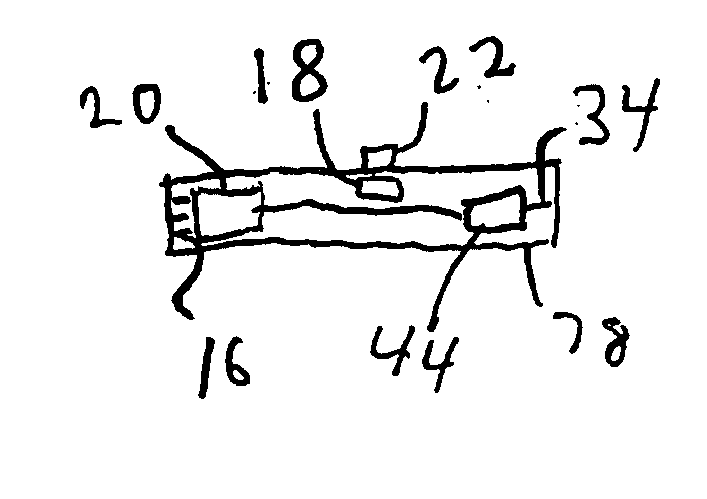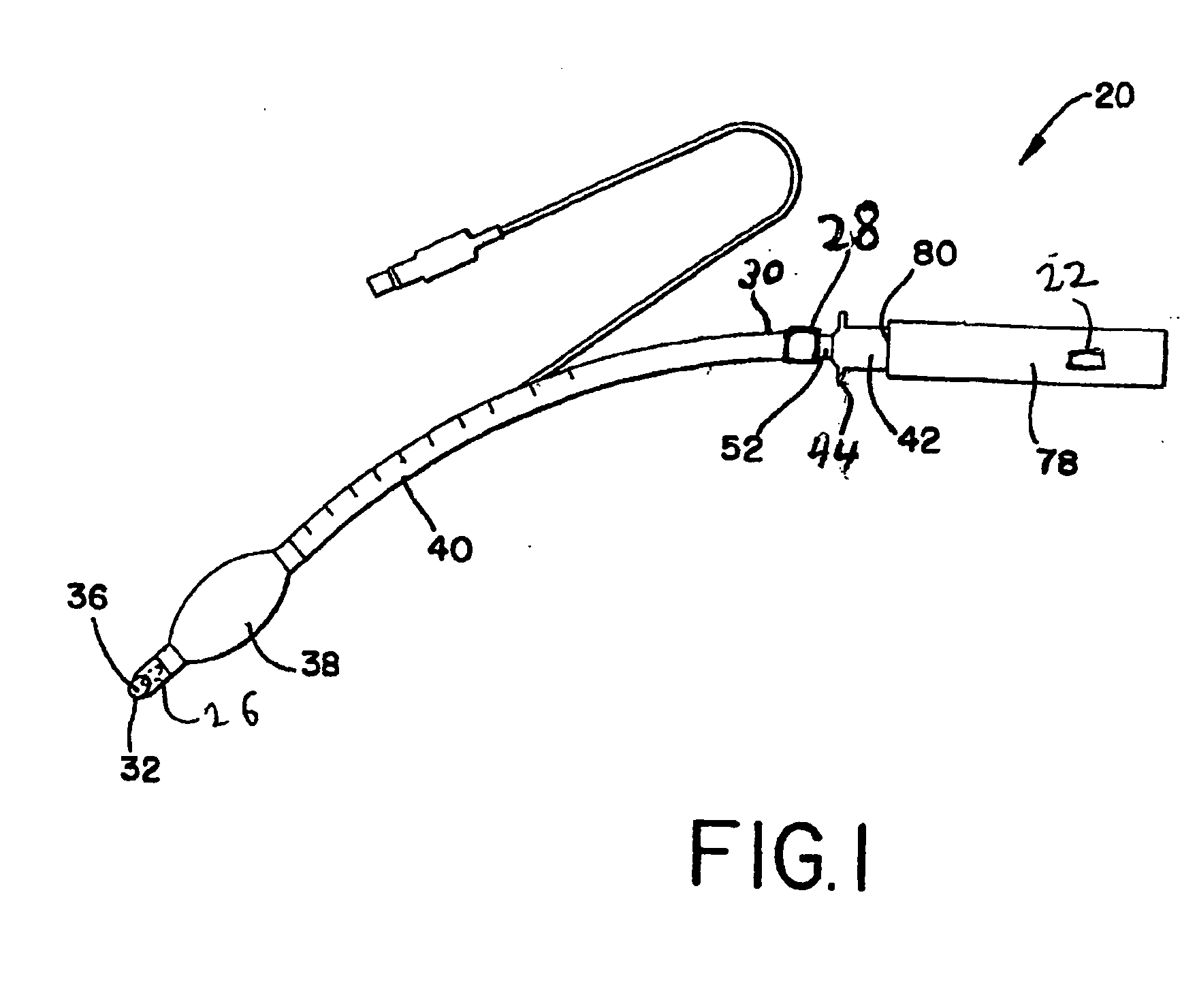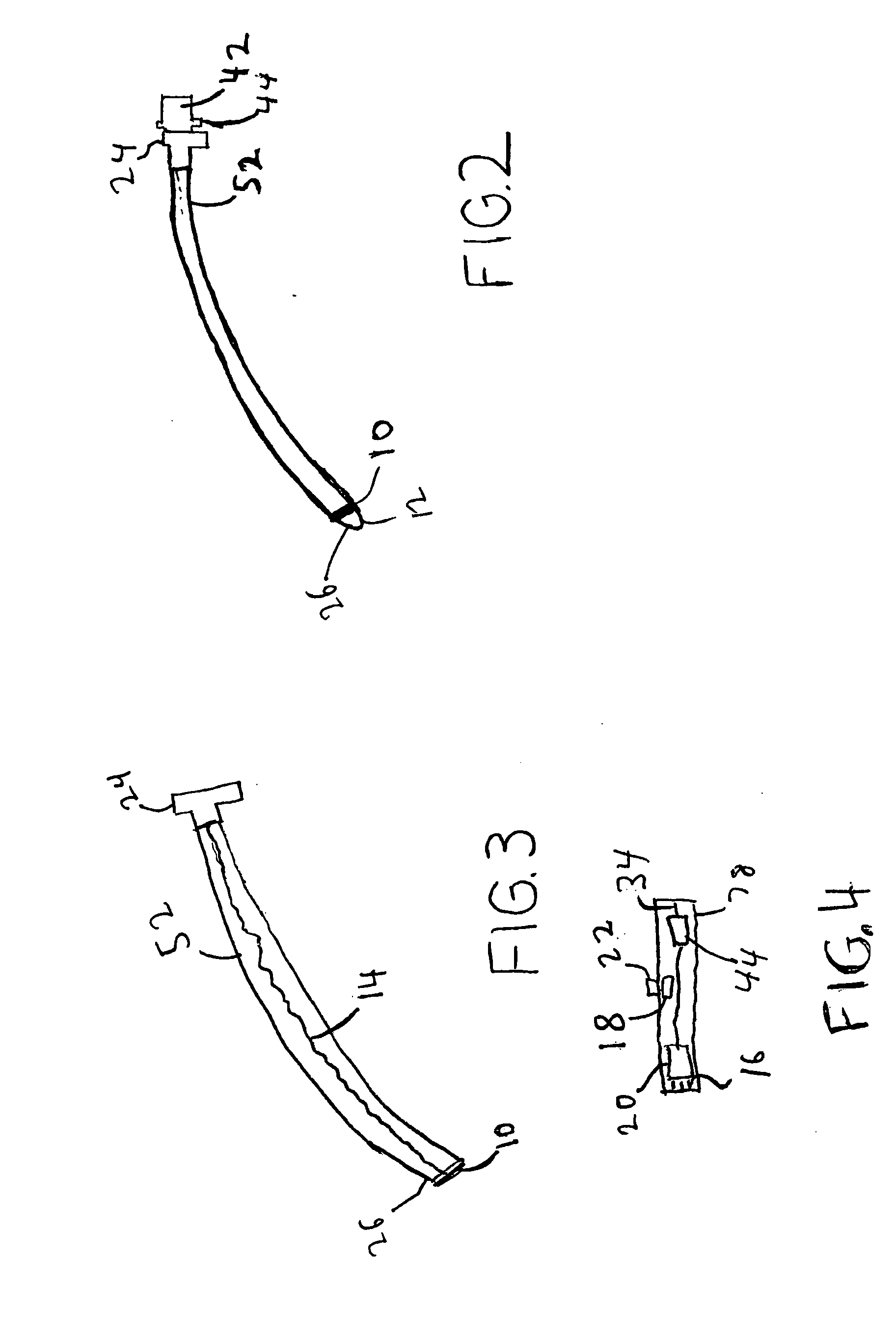System and method for managing difficult airways
a technology of difficult airways and systems, applied in the field of endotracheal intubation of patients, can solve the problems of difficult airways, difficult airways, difficult to precisely control fiberoptic scopes, etc., and achieve the effect of facilitating tube placemen
- Summary
- Abstract
- Description
- Claims
- Application Information
AI Technical Summary
Benefits of technology
Problems solved by technology
Method used
Image
Examples
Embodiment Construction
[0025] Referring first to FIG. 1 of the drawings, an embodiment of an ETT-stylet-wireless transmitter assembly 20 is shown. The assembly 20 includes an ETT 40, stylet 52, and wireless transmitter housing 78. The wireless transmitter housing 78 includes a plug 80 which engages socket assembly 42, which in turn is press fit to the stylet 52. The wireless transmitter housing 78 locks onto the socket assembly 42 and can be unlocked by pressing a tab (not shown) on the socket assembly 42.
[0026] The stylet is made of aluminum tube in this embodiment. In some embodiments, the stylet is made of other malleable materials such as copper. The stylet can be solid wire instead of tubular.
[0027] The stylet is of a size and shape so it can be inserted through the center of the ETT 40, as illustrated, so that the stylet distal end 36 is close to the ETT distal end 32. The stylet should fit smoothly and easily into the ETT 40, and then the ETT 40 with stylet 52 inside can be bent into a curve or o...
PUM
 Login to View More
Login to View More Abstract
Description
Claims
Application Information
 Login to View More
Login to View More - R&D
- Intellectual Property
- Life Sciences
- Materials
- Tech Scout
- Unparalleled Data Quality
- Higher Quality Content
- 60% Fewer Hallucinations
Browse by: Latest US Patents, China's latest patents, Technical Efficacy Thesaurus, Application Domain, Technology Topic, Popular Technical Reports.
© 2025 PatSnap. All rights reserved.Legal|Privacy policy|Modern Slavery Act Transparency Statement|Sitemap|About US| Contact US: help@patsnap.com



